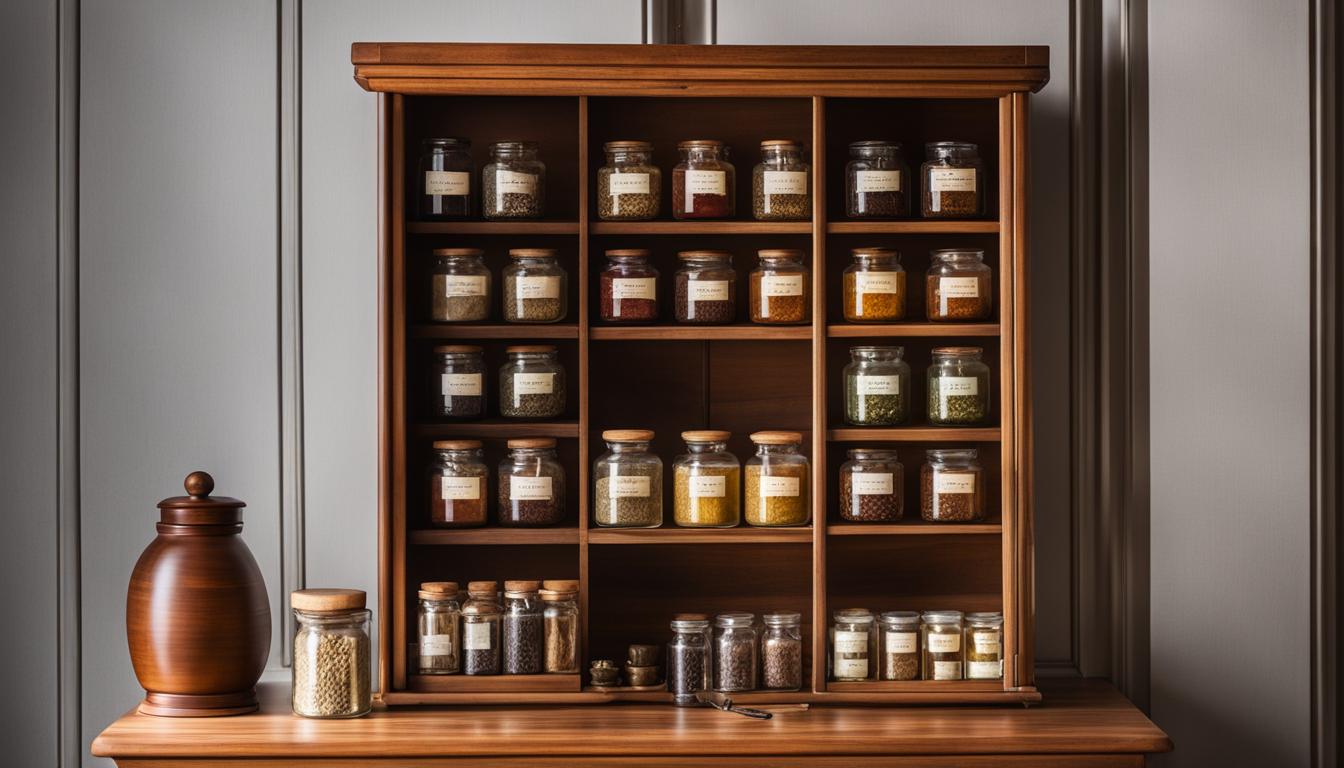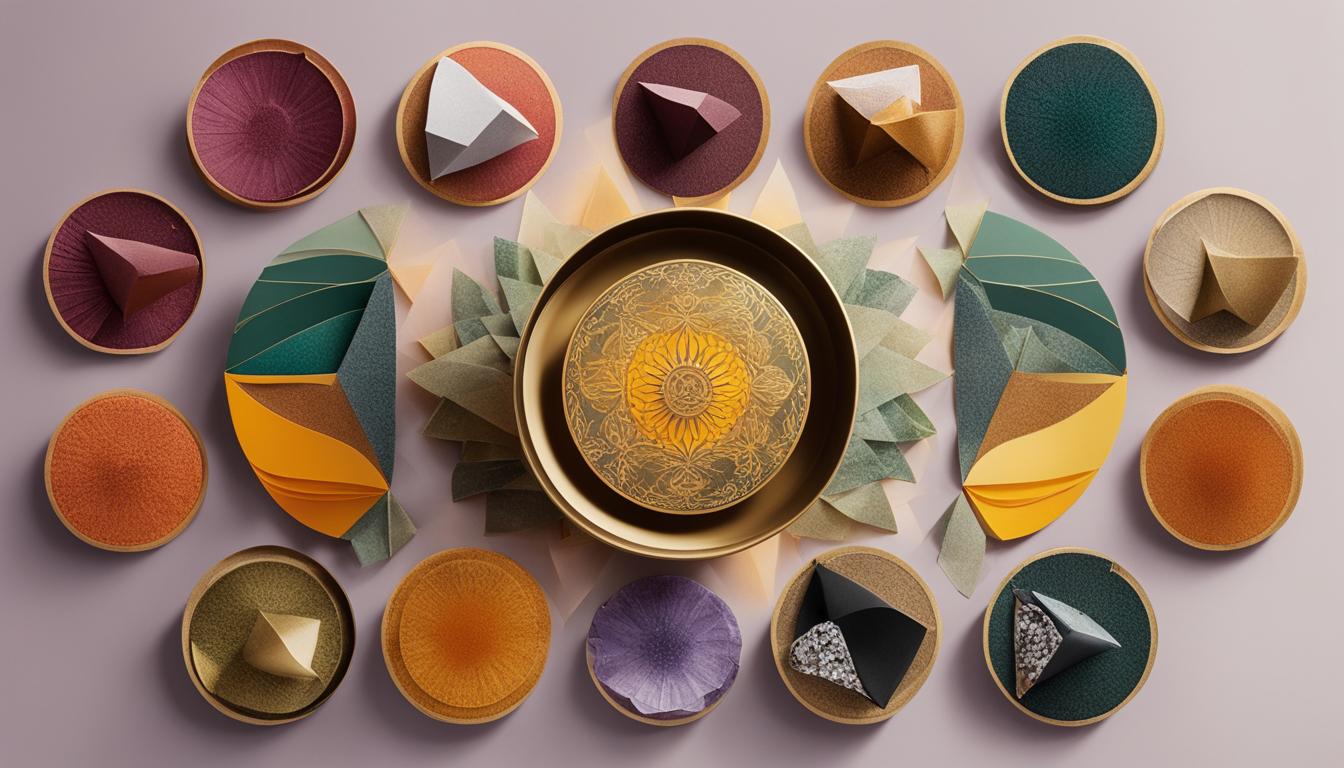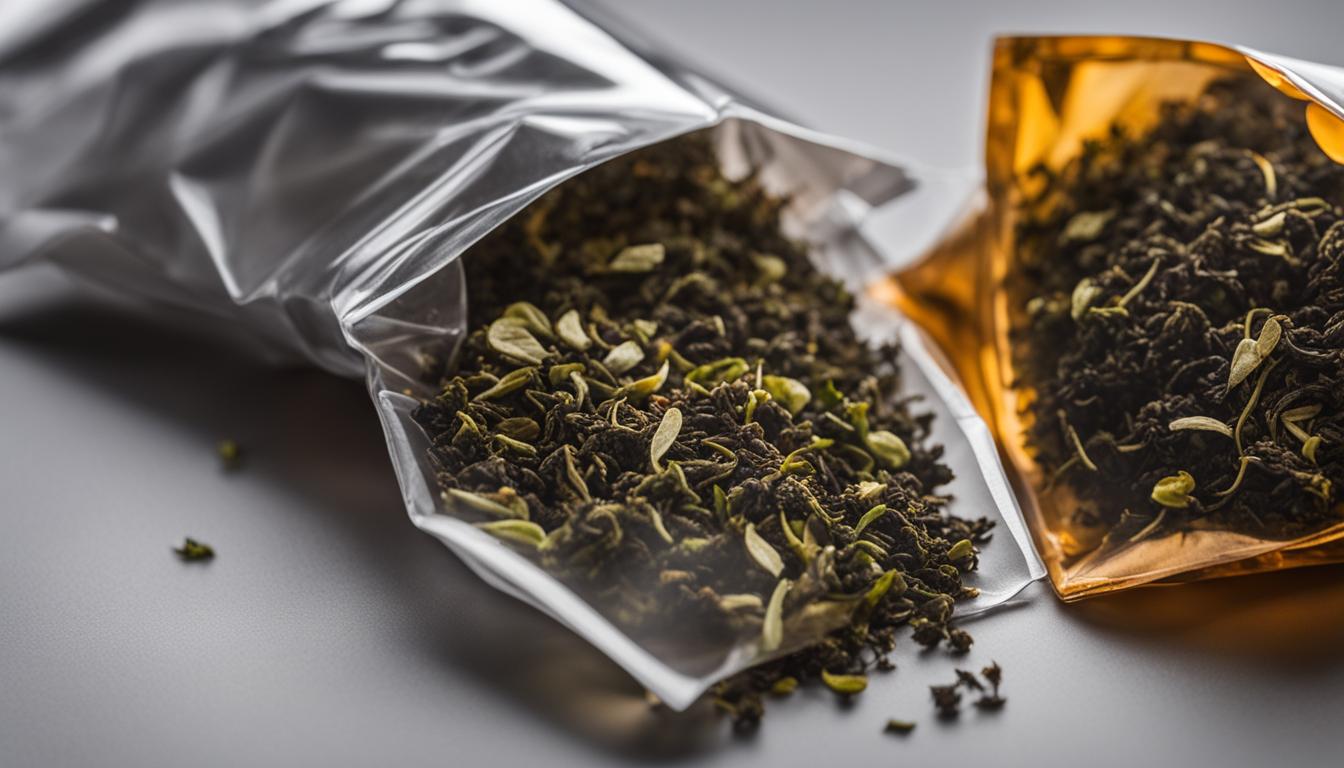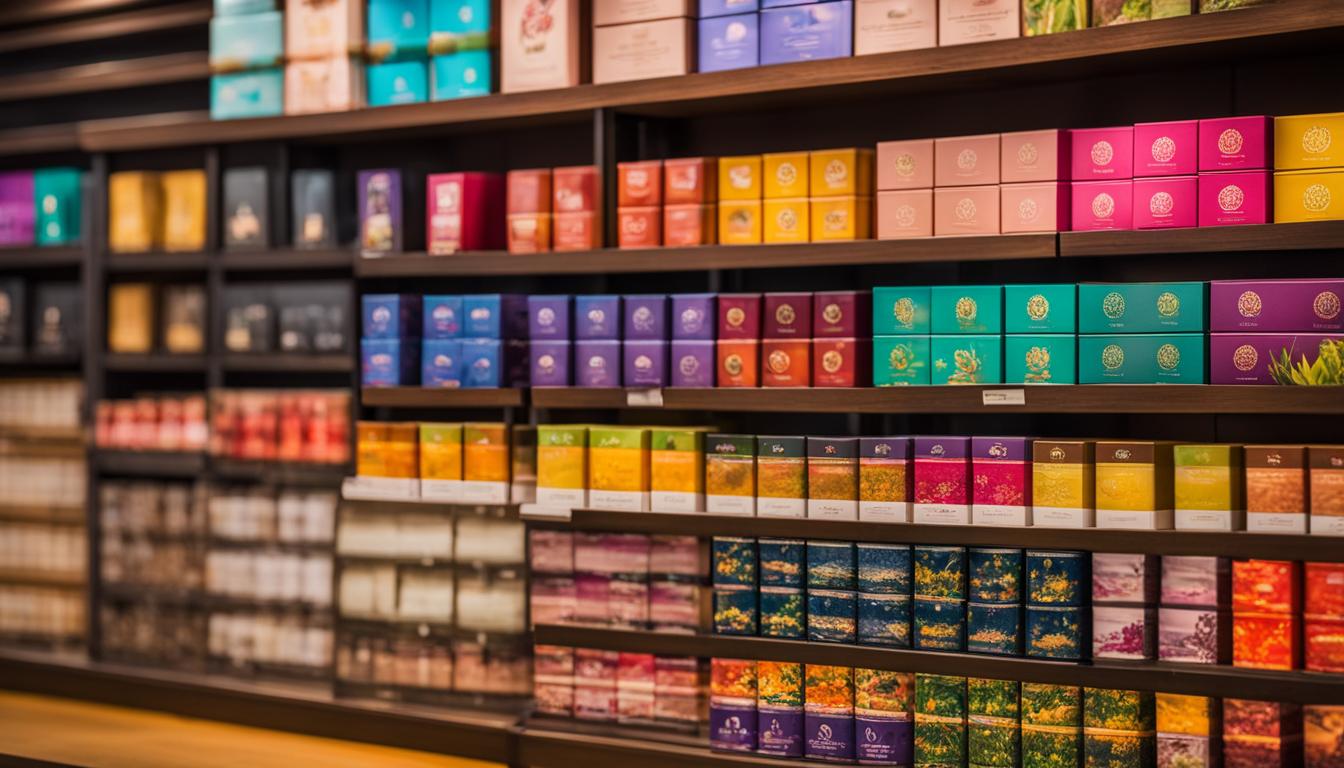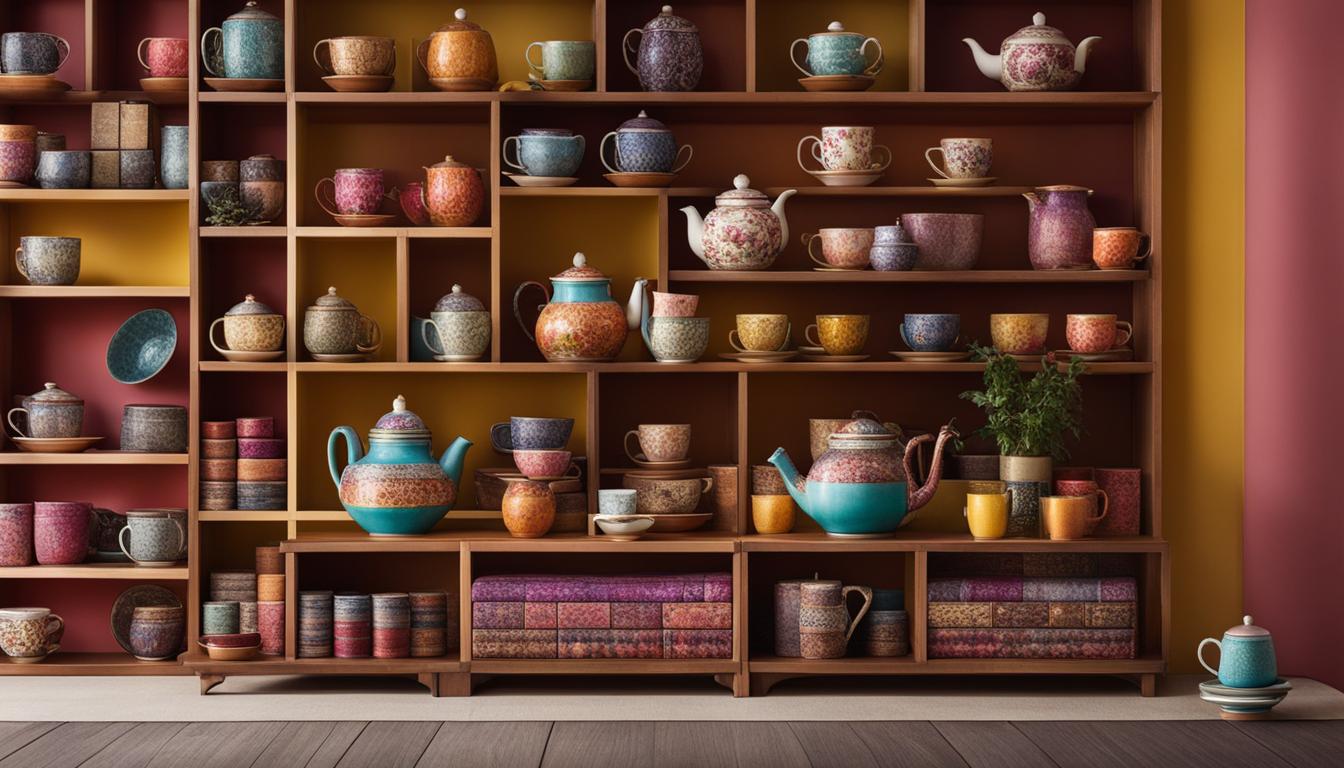Welcome to our guide on maintaining optimal tea quality through effective storage methods. Proper storage is essential for preserving the flavor, aroma, and freshness of your favorite brews. When tea is not stored correctly, it can quickly deteriorate, resulting in a dark color, stale taste, and even mildew. Let’s explore the factors that contribute to tea deterioration and discover the right storage conditions to ensure your tea stays at its best.
Several factors can affect tea quality, including light, temperature, humidity, oxygen, microorganisms, odor pollution, and tea moisture content. To retain tea quality, it’s crucial to consider storage conditions such as temperature, humidity, light, and odor. Different types of tea have specific storage requirements – for example, green and yellow tea need low-temperature storage to prevent oxidation, while oolong tea can be stored at room temperature.
The choice of the container is also important. Opt for metal cans, colored glass bottles, or purple clay pots when storing tea, as they provide the best protection against external factors. Avoid plastic bags, transparent glass, thick paper bags, or newspapers, as they can negatively impact tea quality. In case tea leaves become damp during storage, they can be restored by sun-drying or low-temperature frying.
By following proper tea storage techniques, you can extend the shelf life of your favorite brews. Green tea, for example, has a shelf life of 18 months, while white tea improves with aging. So, let’s dive deeper into the factors affecting tea storage and the best practices for storing different types of tea.
Key Takeaways:
- Proper storage is crucial for maintaining the flavor, aroma, and freshness of tea.
- Factors like light, temperature, humidity, and odor can affect tea quality.
- Choose suitable containers such as metal cans, colored glass bottles, or purple clay pots.
- Avoid storing tea in plastic bags, transparent glass, or thick paper bags to preserve quality.
- Restore damp tea leaves through sun-drying or low-temperature frying.
Factors Affecting Tea Storage and Choosing the Right Containers
Proper tea storage is essential to maintain the freshness, flavor, and aroma of your favorite brews. Several factors can affect the quality of stored tea, including exposure to light, air, moisture, odor, and temperature. It is important to consider these factors and choose the right containers to preserve the quality of your tea.
Light Exposure: Direct sunlight or strong artificial light sources can degrade the compounds in tea and result in flavor loss. To protect tea from light, store it in a dark cupboard or use opaque containers.
Air Exposure: When tea is exposed to air, it can undergo oxidation and lose its flavor. Opt for airtight containers that provide a seal to prevent air from entering. Airtight tins or canisters, glass jars with airtight seals, or vacuum-sealed bags are all suitable options.
Moisture: Excess moisture can lead to the growth of mold or mildew on tea leaves, affecting their quality. Store tea in a dry place away from moisture sources like the kitchen sink or dishwasher. Avoid storing tea in the refrigerator, as the fluctuating temperature can cause condensation and moisture buildup.
“Choosing the right storage container helps protect tea from air, moisture, light, and odor, preserving its quality and flavor.”
Odor Absorption: Tea can easily absorb odors from its surroundings, leading to flavor contamination. Avoid storing tea near strong-smelling substances like spices, coffee, or cleaning products. Choose containers that are odor-resistant, such as glass jars or ceramic containers.
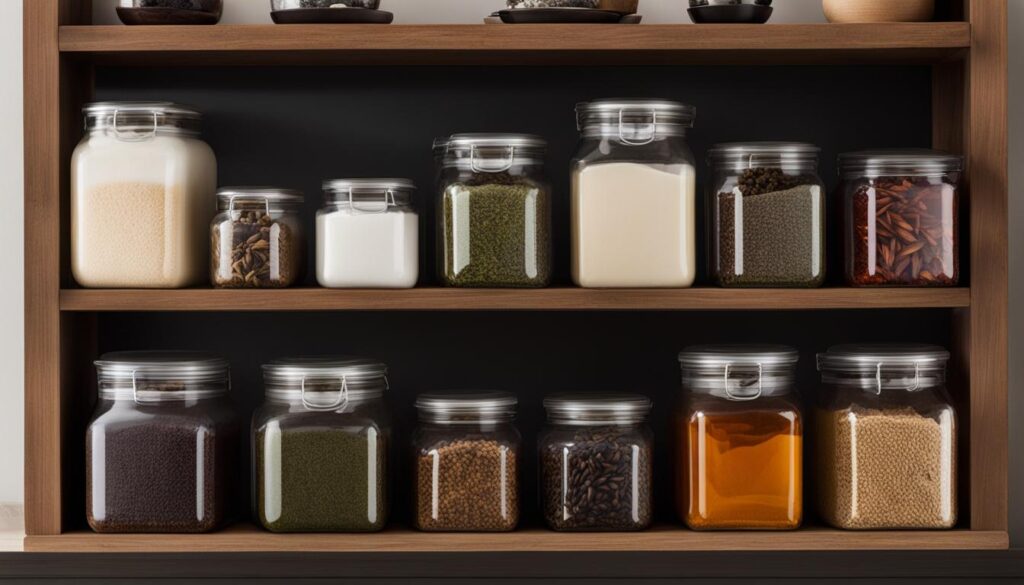
Best Practices for Storing Different Types of Tea
When it comes to storing different types of tea, it’s important to understand their specific requirements to maintain their optimal quality. Let’s take a look at the best practices for storing various types of tea to ensure they stay fresh and flavorful for as long as possible.
Green Tea Storage
Green tea is delicate and easily prone to oxidation, so it needs some extra care. To keep green tea fresh, store it in airtight containers away from light and moisture. If you live in a hot and humid climate, refrigeration is recommended to preserve its quality.
Black Tea Storage
Black tea, being more robust, also requires proper storage to maintain its flavor. Store black tea in airtight containers away from light, moisture, and strong odors. This will help prevent oxidation and preserve its distinct taste.
Oolong Tea Storage
Oolong tea has varying levels of oxidation, so it should be stored similarly to black tea. Keep it in airtight containers away from light, moisture, and strong odors to ensure its flavor and aroma remain intact.
White Tea Storage
White tea, being minimally processed, needs careful storage to retain its delicate flavors. Store white tea in a spot away from strong odors, light, and moisture. Following these guidelines will help preserve its subtle taste and aroma.
Herbal Tea Storage
Herbal teas, made from a variety of herbs, fruits, or flowers, also require proper storage to maintain their freshness. Store herbal teas in airtight containers, away from light and moisture. This will preserve their natural flavors and aromas, ensuring a delightful cup every time.
To extend the shelf life of your teas, there are a few additional practices you can follow. Consider buying tea in smaller quantities to maintain freshness. Properly seal the packaging to prevent moisture exposure. Rotate your tea stock using the “first in, first out” principle to ensure you consume the oldest teas first. Finally, if you have a large tea collection and want to store tea for an extended period, you can consider freezing it. These practices will help you enjoy your teas for a longer time while maintaining their quality.
FAQ
How does proper tea storage impact tea quality?
Proper tea storage is crucial for maintaining the flavor, aroma, and freshness of your favorite brews. Improper storage can lead to deterioration, resulting in dark color, stale taste, and even mildew.
What factors contribute to tea deterioration?
Several factors contribute to tea deterioration, including light, temperature, humidity, oxygen, microorganisms, odor pollution, and tea moisture content.
What are the key considerations for tea storage conditions?
To ensure tea quality retention, it is essential to consider the right storage conditions, including temperature, humidity, light, and odor. Different types of tea have specific storage requirements.
What are the best containers for tea storage?
The best containers for tea storage include metal cans, colored glass bottles, and purple clay pots. It is important to avoid storing tea in plastic bags, transparent glass, thick paper bags, or newspaper.
How can I restore damp tea leaves during storage?
If tea leaves become damp during storage, they can be restored through sun-drying or low-temperature frying.
What is the shelf life of different types of tea?
Green tea has a shelf life of 18 months, while white tea can improve with aging. Other types of tea have varying shelf lives depending on their processing and oxidation levels.
How does light exposure affect tea storage?
Tea should be stored away from direct sunlight or strong artificial light sources to avoid degradation of tea compounds and flavor loss.
What can air exposure and moisture do to tea?
Air exposure can cause tea oxidation and flavor loss, while moisture can lead to mold or mildew growth.
How does odor absorption impact tea storage?
Tea can easily absorb odors from the surrounding environment, resulting in flavor contamination. It is important to store tea away from strong odors.
What are suitable storage containers for tea?
Airtight tins or canisters with proper seals, glass jars with airtight seals, and ceramic or clay containers are suitable options for tea storage. Vacuum-sealed bags are ideal for long-term storage.
How should different types of tea be stored?
Green tea, black tea, oolong tea, white tea, and herbal teas all have specific storage requirements to maintain their optimal quality. It is important to store them properly, away from light, moisture, and strong odors.

